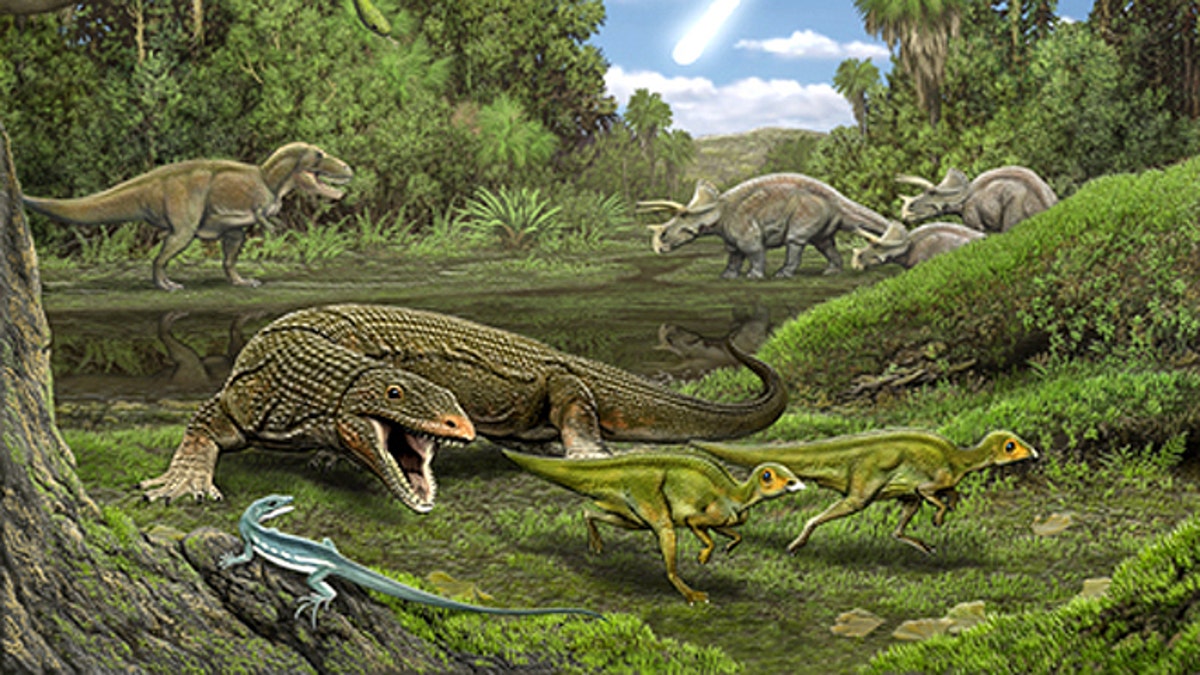
A carnivorous lizard stalks a pair of hatchlings as the lizard Obamadon looks on. (Carl Buell / Yale)
A remarkable range of reptiles lived in the last days of the dinosaurs: tiny lizards, a snake the size of a boa constrictor, six-foot long iguanas, carnivorous lizards the lurked in the swamps of what’s now Montana.
Among them: Obamadon gracilis, a newly identified lizard named in honor of President Barack Obama.
"Lizards and snakes rivaled the dinosaurs in terms of diversity, making it just as much an 'Age of Lizards' as an 'Age of Dinosaurs,'" explained Nicholas R. Longrich, a postdoctoral associate with Yale's Department of Geology and Geophysics, who named Obamadon.
[pullquote]
The name comes from Latin: odon means "tooth" and gracilis means "slender."
"It is a small polyglyphanodontian [one of the most diverse lizard branches] distinguished by tall, slender teeth with large central cusps separated from small accessory cusps by lingual grooves," the researchers write of Obamadon, which is known primarily from the jaw bones of two specimens. Longrich said the creature likely measured less than one foot long and probably ate insects.
Longrich said no one should impute any political significance to the decision to name the extinct lizard after the recently re-elected U.S. president: "We're just having fun with taxonomy."
There is also a fish (Ethiostoma obama) and a type of lichen (Caloplaca obamae) named after the recently re-elected leader of the free world, according to NBC News.
The name was meant in fun, but the study is real: Longrich published a paper in Proceedings of the National Academy of Sciences studying the asteroid collision 65.5. million years ago that is widely thought to have killed the dinosaurs. It also led to extreme devastation among snake and lizard species, he said, many of which disappeared at the end of the Cretaceous following the asteroid strike.
"The asteroid event is typically thought of as affecting the dinosaurs primarily," Longrich said. "But it basically cut this broad swath across the entire ecosystem, taking out everything. Snakes and lizards were hit extremely hard."
As many as 83 percent of all snake and lizard species died off, the researchers said — and the bigger the creature, the more likely it was to become extinct, with no species larger than one pound surviving.




















